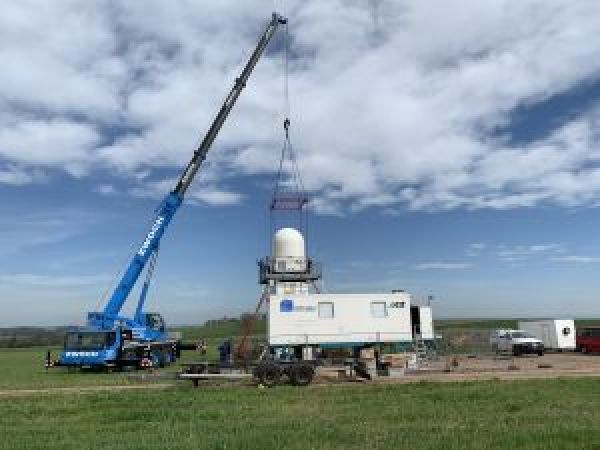Extreme weather events, such as thunderstorms or heavy rainfall and the resulting floods, influence Earth and environmental systems in the long term. To holistically study the impacts of hydrological extremes - from precipitation to water entering the ground to discharge to flow into the ocean -, a measurement campaign at Müglitztal/Saxony is about to start under the MOSES Helmholtz Initiative. The measurement campaign is coordinated by Karlsruhe Institute of Technology (KIT).
A single heavy rainfall event may have serious impacts on an entire river system, ranging from land erosion by floods to nutrient and pollutant transports to changes of the ecosystem. The current MOSES measurement campaign studies hydrological extreme events from the source in the atmosphere to response of biosystems.
MOSES stands for "Modular Observation Solutions for Earth Systems." Within this joint initiative, nine research centers of the Helmholtz Association set up mobile and modular observation systems to study the impacts of temporarily and spatially limited dynamic events, such as extreme precipitation and discharge events, on the long-term development of Earth and environmental systems. The current measurement campaign on hydrological extremes coordinated by KIT takes place from mid-May to mid-July 2019 at Müglitztal, Saxony. In this region located in the Eastern Erzgebirge (Ore Mountains), certain weather conditions may result in extreme precipitations and floods, an example being the flood of 2002. Such extreme events are triggered either by depressions which, together with blockage effects by mountains, cause high precipitation or by small-scale convective precipitation events, i.e. thunderstorms, that may be associated with floods in a limited area, i.e. a mountain valley.
Read more at: Karlsruhe Institute of Technology
KITcube mobile measurement facility: with the help of a truck crane, the precipitation radar is installed at Müglitztal/Saxony. (Photo Credit: Dr. Andreas Wieser, KIT)


